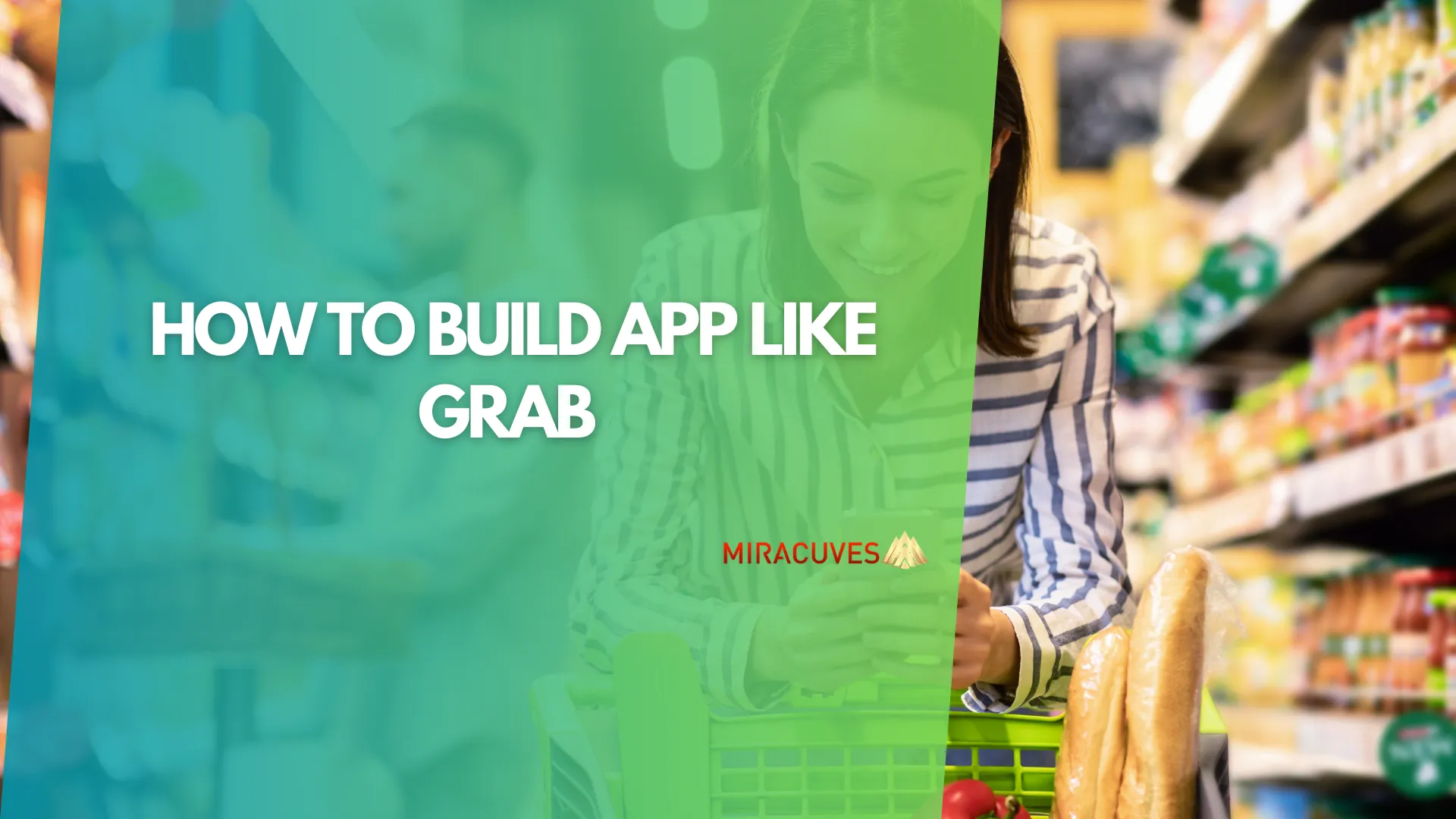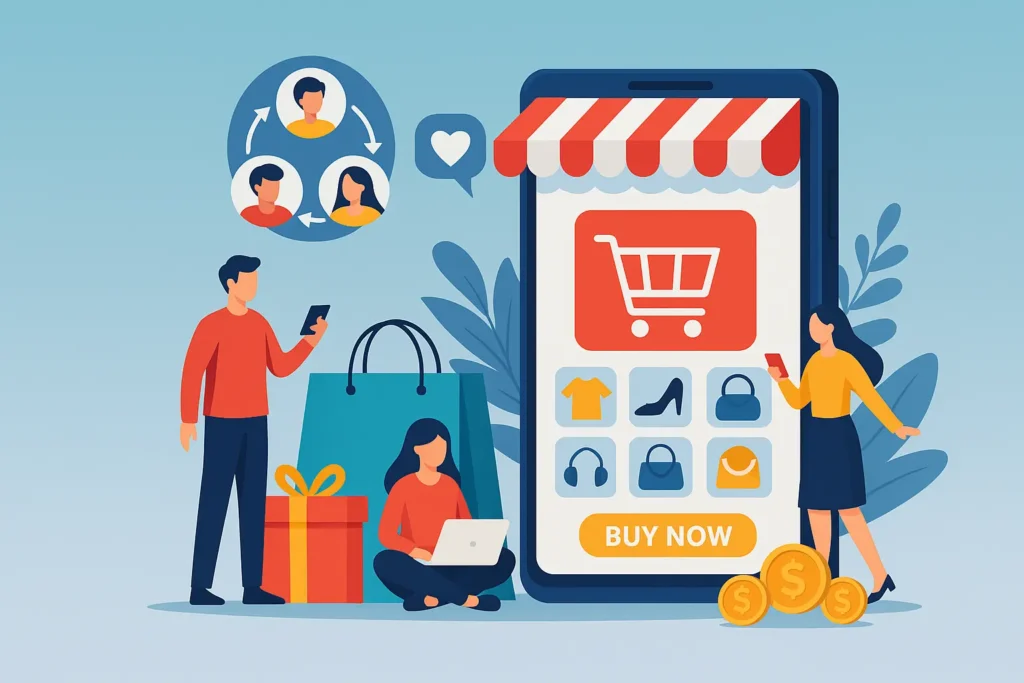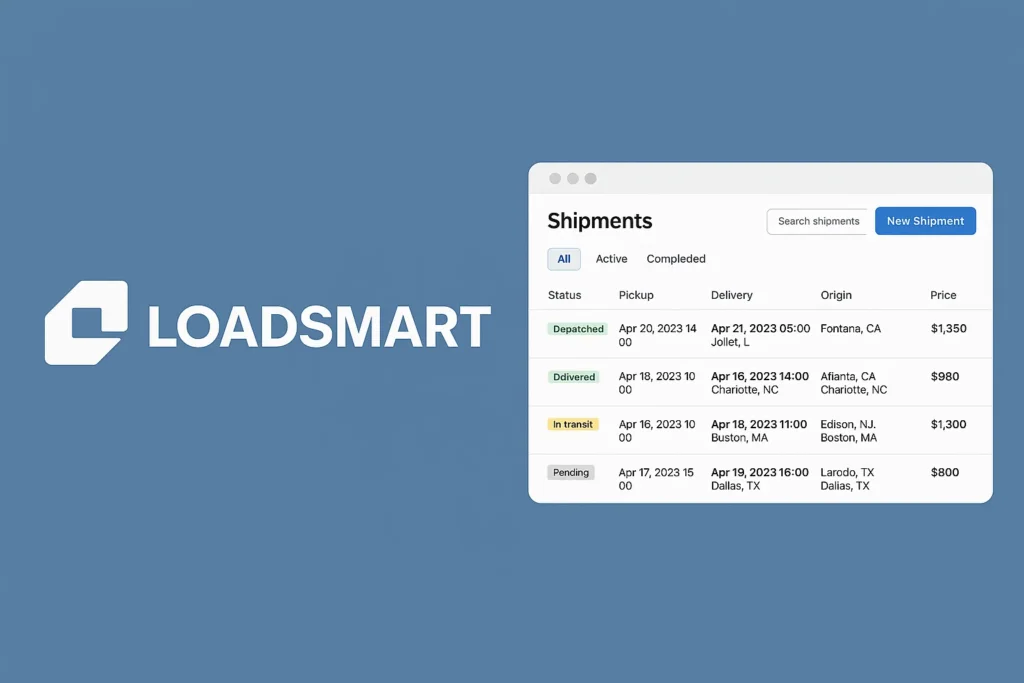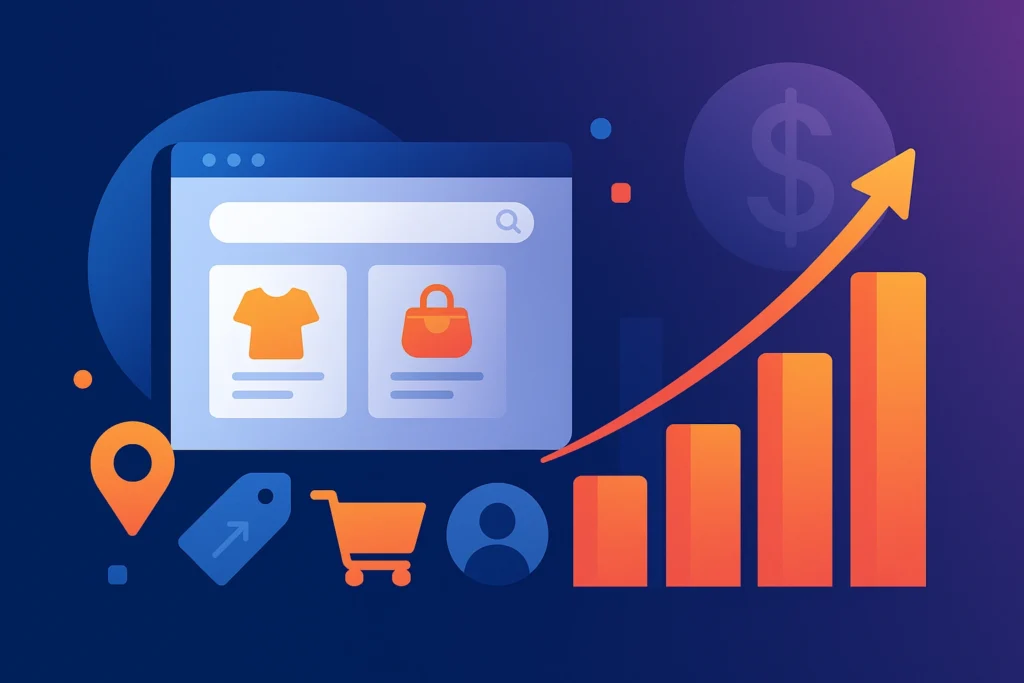Urban life thrives on convenience, and platforms like Grab have transformed how people access transportation, food delivery, and parcel services—all within one seamless app. These multi-service platforms are not just a trend; they represent the future of on-demand services. With users expecting more personalized and efficient services, the demand for mobility solutions is growing faster than ever. Developing a Grab-like app offers a unique opportunity to tap into this booming sector, bringing together different services under one roof to attract users and drive profitability.
However, building such a platform from scratch can be a daunting task due to high costs, complex infrastructure, and the time it takes to develop and launch. This is where Miracuves Solutions makes an impact. Their ready-made app designs allow businesses to create a fully functional multi-service app at 10% of the global cost—with development that would typically take a month completed in just one day. This speed and affordability empower startups and businesses to enter the market swiftly and effectively.
This comprehensive guide will provide the blueprint to build your own Grab competitor, covering essential features, technical requirements, MVP development, cost comparisons, and marketing strategies. You’ll also discover how to differentiate your platform, ensuring it stands out from other mobility apps and delivers a unique user experience.
What the App Is and What It Does
A multi-service driver app, like Grab, is much more than a taxi-booking platform. It integrates a variety of services into one ecosystem, giving users access to transportation, food delivery, parcel services, grocery shopping, and even financial tools. The idea is to create an all-in-one solution that caters to urban users’ everyday needs, helping them save time and effort.
Key Functions of a Multi-Service App Like Grab
- Ride-Hailing Services
- Users book taxis, bikes, or carpool rides for quick and easy transportation.
- Real-time GPS tracking and in-app payments make it hassle-free.
- Food Delivery
- Users can browse restaurants, order meals, and track deliveries.
- Integrated loyalty programs encourage repeat usage.
- Parcel Delivery
- Provides fast, reliable delivery of parcels and packages across cities.
- Useful for both businesses and individual users.
- Grocery and Retail Delivery
- Delivers groceries, medicine, and other essentials to the customer’s doorstep.
- Digital Wallet and Financial Services
- Offers in-app payments, top-ups, and even loans or insurance services.
The goal of such apps is to create a digital ecosystem that drives high user engagement by offering multiple services in a single app. This not only simplifies user experience but also opens up multiple revenue streams for the business.
Also Read:- Build a Profitable Taxi App Like LeCab
| Service | Grab | Your Multi-Service App |
|---|---|---|
| Ride-hailing | Yes | Yes |
| Food Delivery | Yes | Optional |
| Parcel Delivery | Yes | Yes |
| Grocery Delivery | Yes | Optional |
| Financial Services | Yes (Wallet & Insurance) | Customizable |
Why Build This App?
The growing demand for multi-service apps like Grab signals a tremendous business opportunity. Today’s users want more convenience, and businesses that can offer diverse services under one app are positioned to win big. Creating a multi-service driver app isn’t just about ride-hailing—it’s about becoming a one-stop platform for urban life, combining transportation, food delivery, and courier services seamlessly.
Key Reasons to Build a Grab-Like App
- Increasing Demand for On-Demand Services
- People now expect instant services, whether it’s booking a ride or ordering food. The on-demand economy is booming, and building an app like Grab puts you right in the middle of this profitable trend.
- Multiple Revenue Streams
- With ride-hailing, food delivery, grocery services, and digital wallets integrated into one app, your business can generate revenue through commissions, delivery fees, ads, and subscriptions.
- High User Engagement and Retention
- Offering multiple services in one app encourages users to stay within the ecosystem, reducing churn and boosting retention rates.
- Scalable Business Model
- As your user base grows, you can scale the platform to include more services or expand into new cities, ensuring long-term growth.
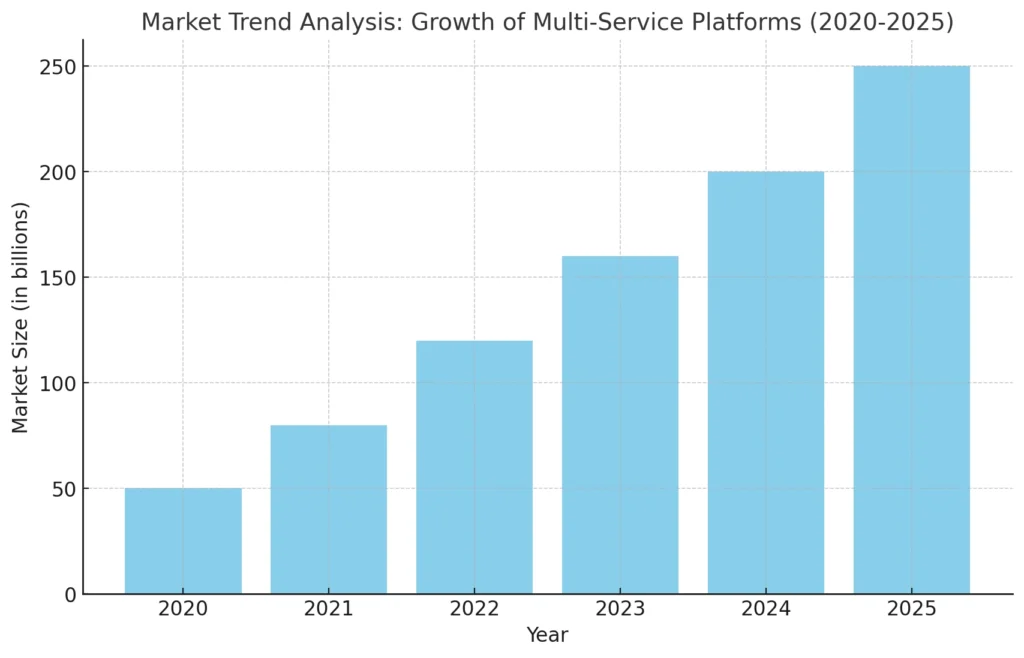
How to Differentiate from Competitors
With numerous ride-hailing and multi-service apps in the market, standing out can be a challenge. To succeed, you must offer something unique that captures users’ attention and builds loyalty. Grab succeeded by combining services into one platform, but creating a winning competitor involves thinking creatively about what your app can offer that others can’t. Here are some key ways to differentiate your platform:
Unique Value Propositions to Stand Out
- Localized Services
- Offer city-specific services, such as bike taxis for congested areas or eco-friendly transportation options. Personalizing services to a region builds a stronger connection with users.
- Loyalty Programs and Discounts
- Introduce reward points or subscription plans where users can earn discounts across multiple services. This helps keep users engaged and encourages repeat usage.
- Advanced Safety Features
- Include safety tools like SOS buttons, real-time ride monitoring, and driver background verification to build trust and attract more users.
- AI-Driven Recommendations
- Use AI and machine learning to suggest rides, food options, or delivery services based on user behavior and preferences, enhancing the customer experience.
- Sustainability Focus
- Add green initiatives, such as electric vehicles or carbon-neutral delivery services, appealing to eco-conscious users.
By focusing on localization, safety, rewards, and sustainability, you can create a platform that resonates with users on a deeper level and sets you apart from other players in the market.
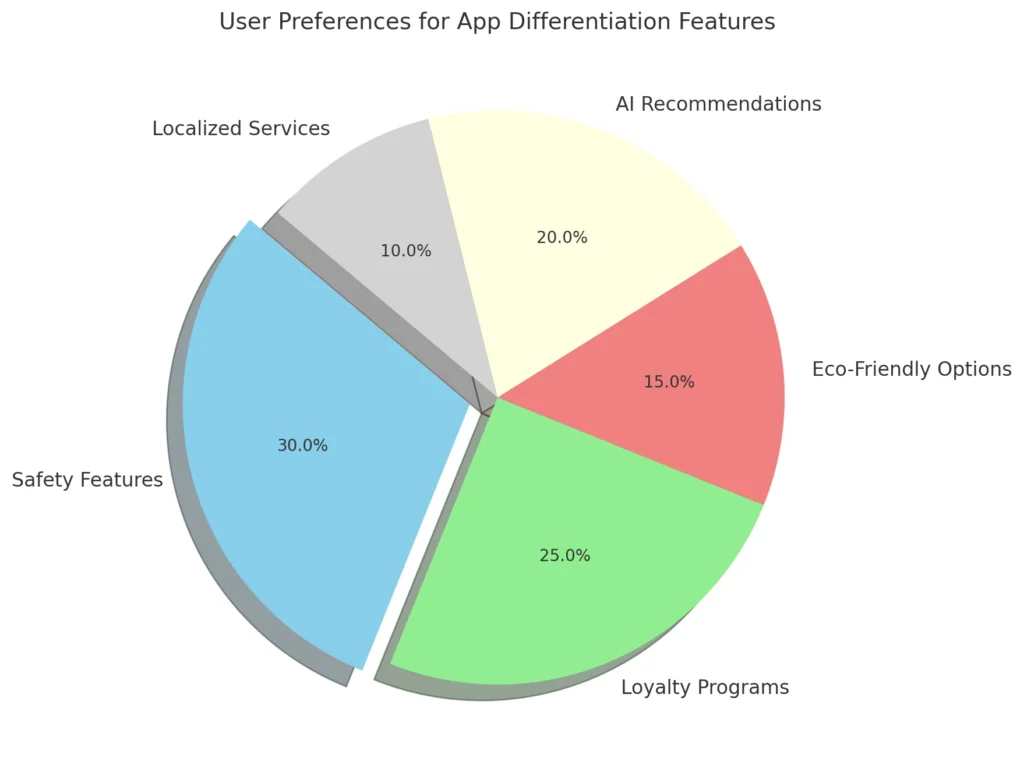
Market Size and Industry Growth
The market for multi-service platforms has experienced unprecedented growth over the past few years, driven by increasing urbanization and consumer demand for convenience. People now prefer apps that consolidate multiple services—such as transportation, food delivery, and parcel services—into a single platform. This has not only expanded the market size but also created ample opportunities for new competitors to enter and thrive.
Global Market Size and Trends
- Ride-Hailing Industry
- Expected to reach $285 billion by 2030, with demand growing at a 10% annual rate.
- On-Demand Delivery Services
- The food delivery sector alone is projected to grow by 13% annually, reaching $500 billion by 2032.
- User Shift Toward Mobility Platforms
- The success of multi-service apps shows a shift from single-use platforms to integrated services, resulting in higher customer engagement and retention.
Opportunities for Growth
- Expansion into emerging markets where demand for on-demand services is still evolving.
- Growing interest in sustainable and electric mobility offers new revenue streams.
- Businesses focusing on AI and automation can attract tech-savvy users and gain a competitive edge.
Also Read:- InDrive Business Model and Revenue Guide
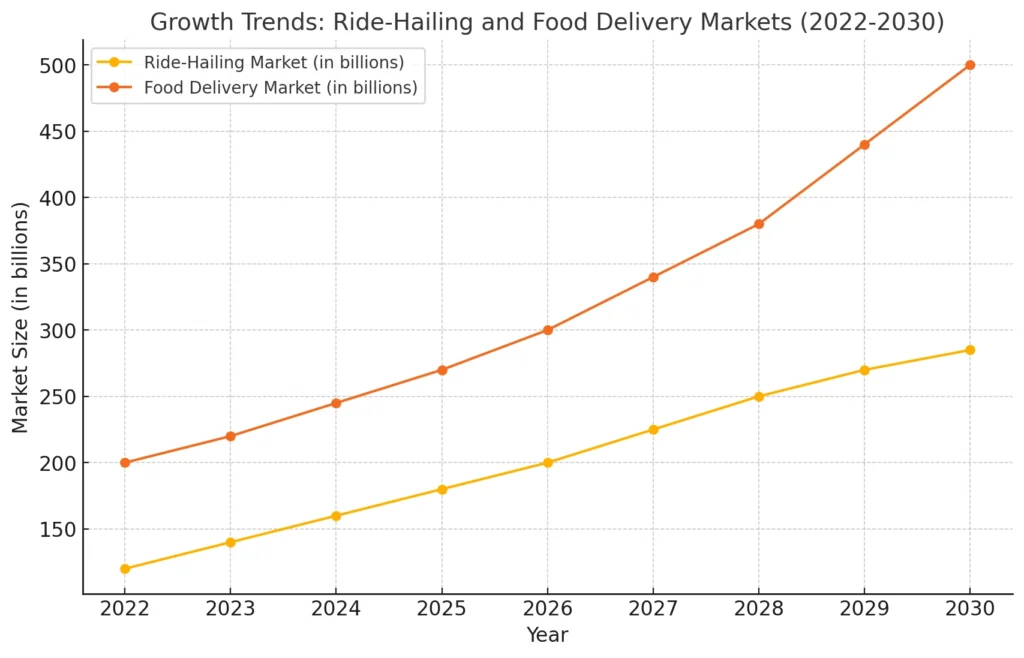
Key Features of the App
Creating a multi-service driver app requires a well-thought-out feature set that ensures convenience, reliability, and engagement. The right combination of features will keep users coming back and encourage drivers and vendors to join your platform. Below are the key features your Grab-like app must offer for seamless operation across multiple services:
1. User App Features
- Ride Booking and Scheduling
- Users can book rides in real-time or schedule them in advance with GPS tracking and ETA updates.
- Multi-Service Orders
- Users can order food, groceries, and courier services within the same app.
- In-App Payment Integration
- Multiple payment options, including digital wallets, credit cards, and cash on delivery.
2. Driver App Features
- Order and Ride Management
- Drivers can manage ride and delivery requests with real-time route suggestions.
- Earnings Dashboard
- Drivers have access to daily and monthly earnings reports for transparency.
- Driver Availability Toggle
- A simple switch to indicate when the driver is available for rides or deliveries.
3. Admin Panel Features
- Order and User Management
- Admins can monitor all transactions and manage user profiles in real time.
- Driver Performance Monitoring
- Track driver performance, ratings, and feedback to maintain service quality.
- Promotions and Discounts
- Easily manage coupons, discounts, and reward programs.
| Feature | User App | Driver App | Admin Panel |
|---|---|---|---|
| Ride Booking | Yes | Yes | Monitor rides |
| Multi-Service Orders | Yes | Manage deliveries | Track orders |
| Payment Integration | Yes | Track payments | Manage payments |
| Earnings Dashboard | No | Yes | View reports |
| Driver Availability Toggle | No | Yes | Monitor driver availability |
| Promotions Management | No | No | Manage offers and discounts |
Grab has revolutionized the on-demand market!
Let us help you develop a feature-rich ride-hailing
and delivery app that drives success.
MVP (Minimum Viable Product) and Development Approach
Launching a Minimum Viable Product (MVP) is the smartest way to get your app to the market quickly while minimizing risks. An MVP version includes only the core features necessary to meet the basic needs of users, allowing you to gather feedback and refine the product before scaling it. This lean approach saves time, effort, and money, giving your business the agility to adapt to user preferences and market trends.
Core Features to Include in the MVP
- User Registration and Login
- Simple onboarding with social login and OTP verification.
- Ride-Hailing Functionality
- Users can book taxis with real-time tracking and estimated arrival times.
- In-App Payment Integration
- Support for popular payment methods like cards, wallets, and cash on delivery.
- Order and Delivery Tracking
- Basic functionality for food and parcel delivery services with status updates.
- Driver App Essentials
- Order management, route guidance, and availability toggle for drivers.
An MVP reduces development time significantly while ensuring you have a functional product to attract early users. This initial feedback helps identify what works and what needs improvement before investing in full-scale development.
Using Miracuves Solutions for Faster MVP Delivery
With Miracuves Solutions, you can skip the lengthy development process by leveraging ready-made solutions. What usually takes a month to develop globally can be completed within just one day. This gives you the advantage of going to market early, collecting feedback faster, and refining your product more efficiently.
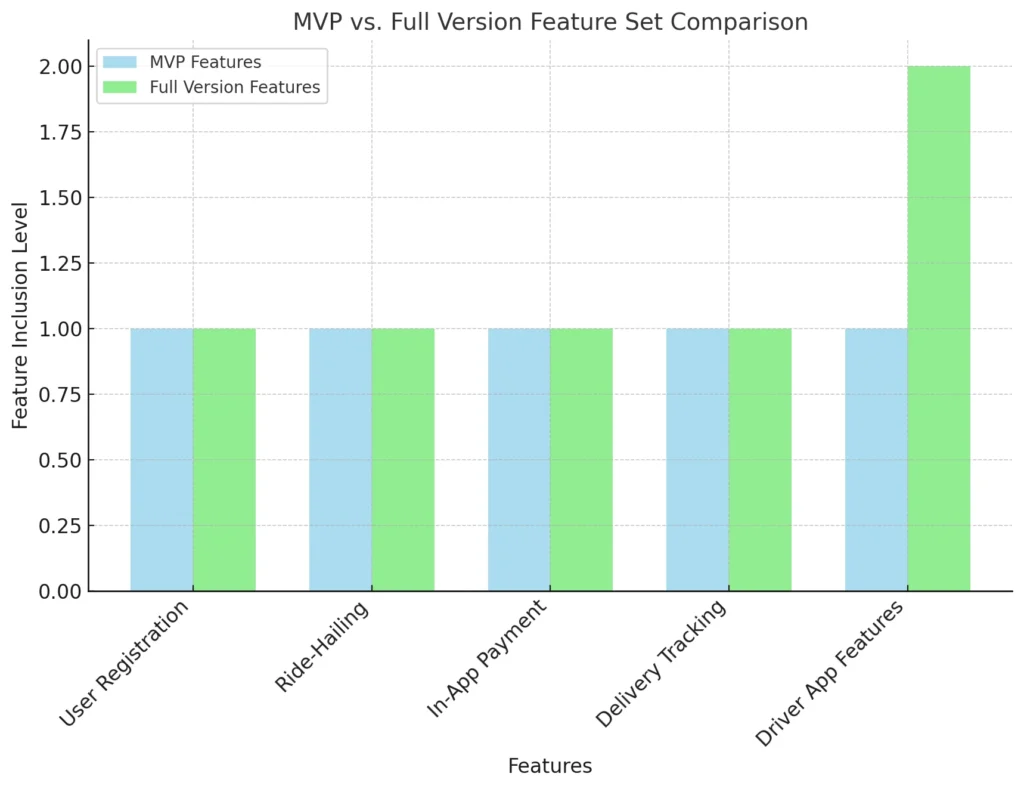
Technical Requirements
Developing a multi-service driver app involves choosing the right technologies to ensure smooth performance, scalability, and security. The technical stack defines the tools, frameworks, and infrastructure needed to build a reliable app that caters to users, drivers, and admins. Below is a breakdown of the essential technical components required to build your app successfully. For a deeper understanding of different tech stacks, you can refer to Stack Overflow.
Frontend Development
- React Native or Flutter: Ideal for building cross-platform mobile apps that work seamlessly on both Android and iOS.
- HTML5, CSS3, JavaScript: Used for web-based components like the admin panel.
Backend Development
- Node.js or Django: Handles server-side logic, API calls, and data management efficiently.
- Express.js: For building lightweight APIs to connect different services.
Database Management
- MySQL or PostgreSQL: For structured data storage, such as user profiles and order history.
- MongoDB or Firebase: Ideal for real-time data, such as live ride tracking.
Payment Gateway Integration
- Stripe, PayPal, or Razorpay: For secure and smooth in-app payments.
- Digital Wallets: Integration with wallets like Apple Pay or Google Pay.
Cloud Hosting and Storage
- AWS, Google Cloud, or Microsoft Azure: For secure and scalable cloud infrastructure.
Third-Party APIs
- Google Maps API: For location services and route optimization.
- Twilio API: For SMS notifications and real-time communication.
This combination of frontend, backend, database, and cloud services ensures that your app performs efficiently while being flexible enough to scale as your business grows.
To build a robust and scalable multi-service driver app, it’s essential to leverage specialized solutions that streamline development and operations. One of the key considerations is integrating ride-sharing technology solutions that enhance real-time tracking, optimize route planning, and ensure seamless ride management. These solutions not only improve user and driver experiences but also help reduce development complexity by providing pre-built frameworks tailored for ride-sharing platforms. By partnering with established providers, such as Miracuves’ ride-sharing solutions, businesses can accelerate their development timeline while maintaining high-quality standards.
Also Read:- How to Build a Food Delivery App Like Swiggy
| Component | Global Standard Tech Stack | Miracuves Solutions Tech Stack |
|---|---|---|
| Frontend Framework | React Native, Flutter | React Native, Flutter |
| Backend Framework | Node.js, Django | Node.js, Express.js |
| Database | MySQL, MongoDB | PostgreSQL, Firebase |
| Payment Gateways | Stripe, Razorpay | Stripe, PayPal |
| Cloud Hosting | AWS, Google Cloud | AWS, Google Cloud |
| Third-Party APIs | Google Maps, Twilio | Google Maps, Twilio |
Design and User Interface (UI/UX)
In a competitive market, first impressions matter, and the design of your app plays a critical role in shaping those impressions. A well-designed UI (User Interface) ensures users can easily navigate the app, while UX (User Experience) focuses on creating a seamless journey from booking a ride to placing an order. Your app’s design must be intuitive, responsive, and visually appealing, ensuring that users, drivers, and admins can engage with it effortlessly.
Essential Design Elements for Your Multi-Service App
- User-Centric Layout
- The home screen should be clean and feature easy access to rides, deliveries, and orders. Avoid clutter to enhance usability.
- Implement easy-to-use navigation menus for a smooth browsing experience.
- Customizable Themes and Colors
- Allow users and drivers to switch between light and dark modes for better accessibility and user comfort.
- Quick Access Features
- Use floating action buttons (FAB) for quick actions like booking a ride or tracking an order.
- Real-Time Interactions
- Use animations and status indicators to show live updates for bookings and deliveries, giving users instant feedback.
- Driver-Friendly Design
- Provide clear route guidance and easy access to orders, minimizing confusion for drivers on the road.
- Admin Panel Efficiency
- The admin panel should feature dashboards with real-time data for quick insights into transactions, rides, and user engagement.
Using Ready-made UI solutions for Faster Design
Developing the perfect design from scratch takes time, but Miracuves Solutions offers ready-made solutions that are both attractive and functional. These ready-made solutions save time without compromising quality and can be customized to suit your brand identity, allowing you to focus more on operations and scaling.
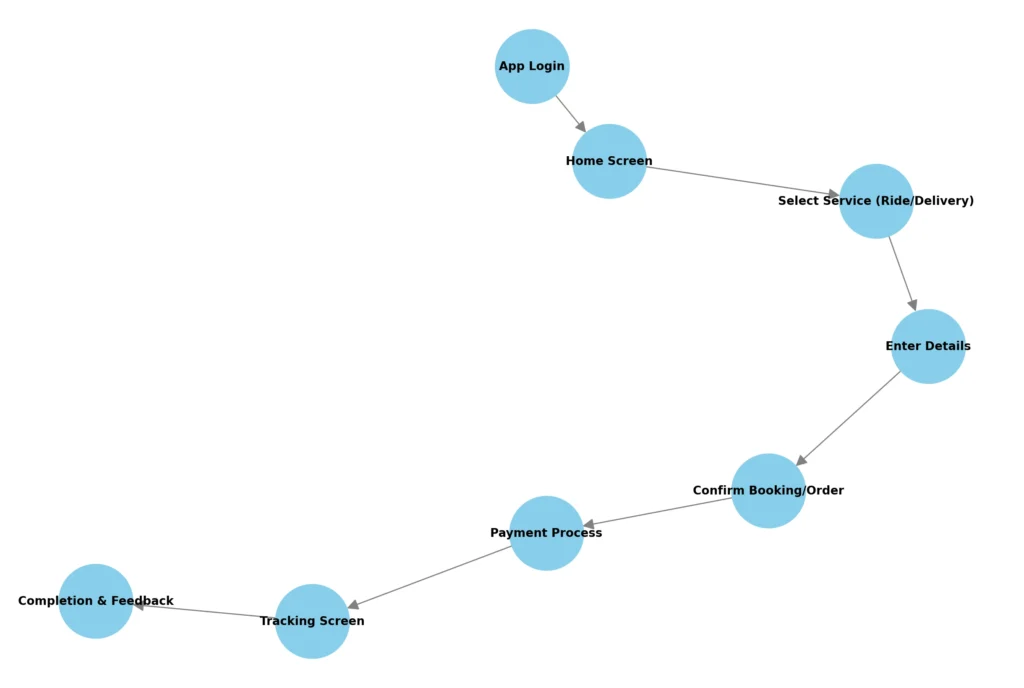
Development Process
Building a multi-service app like Grab requires a well-structured development process that ensures the app is reliable, scalable, and user-friendly. This process involves several phases, from planning and designing to coding, testing, and deployment. Here’s a breakdown of the key steps involved in developing your app:
1. Market Research and Requirement Gathering
- Identify your target audience, key competitors, and market trends.
- Gather requirements for features, technology, and design to align with user expectations.
2. Wireframing and Prototyping
- Create wireframes to visualize the app’s layout and user flow.
- Develop a clickable prototype to get early feedback from stakeholders or potential users.
3. Frontend and Backend Development
- Frontend Development: Build the user-facing elements using React Native or Flutter to ensure cross-platform compatibility.
- Backend Development: Use Node.js or Django to handle server-side operations, such as managing orders, payments, and user data.
4. API Integration and Payment Setup
- Integrate third-party APIs like Google Maps for location tracking and Twilio for notifications.
- Set up payment gateways (Stripe, PayPal) to handle secure transactions within the app.
5. Testing and Quality Assurance
- Conduct both manual and automated testing to identify and fix bugs.
- Perform load testing to ensure the app can handle high traffic during peak hours.
6. Deployment and Launch
- Deploy the app on Google Play Store and Apple App Store.
- Set up cloud hosting using AWS or Google Cloud for secure and scalable backend operations.
How Miracuves Solutions Simplifies the Process
With Miracuves Solutions, you don’t need to follow the conventional development timeline. Their ready-made solutions allow you to launch your app in just one day, compared to the one month typically required globally. This gives you a competitive edge by entering the market faster while maintaining quality.
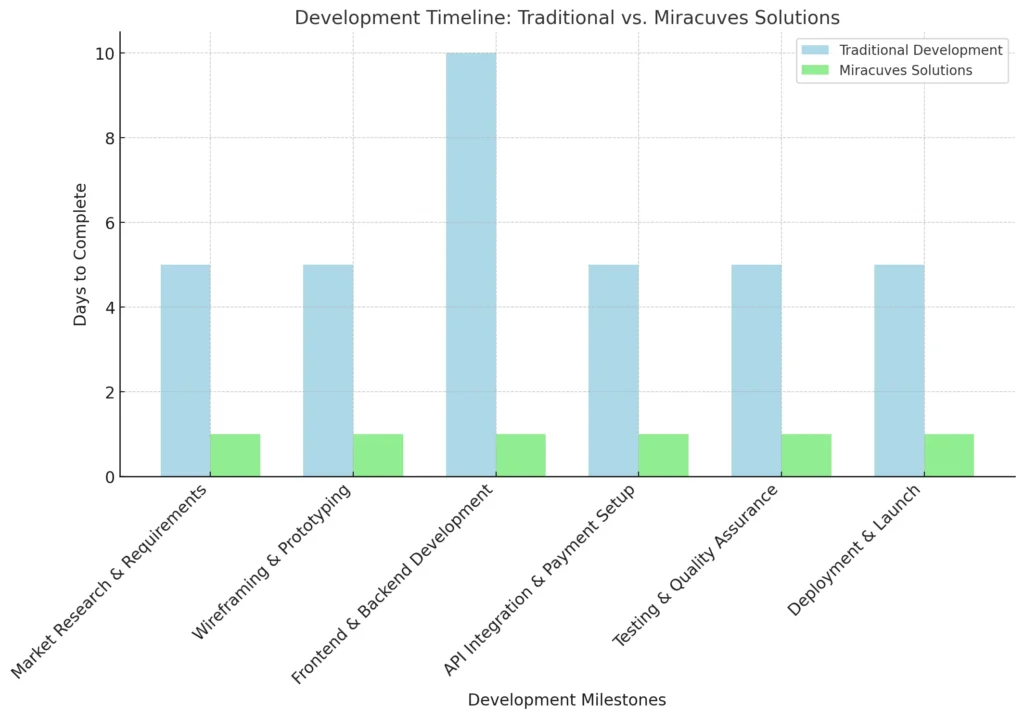
Cost Estimation and Timeframe
Understanding the costs associated with developing a multi-service driver app is crucial for budgeting and ensuring financial viability. The expenses can vary significantly based on features, technology stack, and development methods. However, having a clear idea of what to expect will help you make informed decisions.
Typical Cost Breakdown
- Development Costs
- Global Average: Developing a complex app like Grab typically ranges from $5,000 to $60,000. This includes both frontend and backend development, testing, and deployment.
- Miracuves Solutions Cost: With Miracuves, you can expect to spend around $600 for similar functionalities, representing just 10% of the global average.
- Design Costs
- High-quality UI/UX design can cost anywhere from $2,000 to $10,000.
- Using ready-made solutions from Miracuves can significantly reduce these costs.
- Infrastructure Costs
- Cloud hosting and server costs can add an additional $200 to $2,000 annually, depending on usage.
- Maintenance and Updates
- Regular maintenance can range from 15% to 20% of the initial development cost each year.
Timeframe for Development
- Traditional Development
- The complete process typically takes about 4 to 6 months, depending on the complexity and features involved.
- Miracuves Solutions Timeline
- With their ready-made designs, you can launch your app in just 1 day, a significant reduction in time and allowing you to enter the market quickly.
| Cost Item | Global Average | Miracuves Solutions |
|---|---|---|
| Development | $5,000 – $60,000 | $600 |
| Design | $2,000 – $10,000 | ready-made solutions reduce costs significantly |
| Infrastructure | $200 – $2,000/year | Same as global average |
| Maintenance (annual) | 15% – 20% of dev cost | 15% – 20% of dev cost |
| Total Development Time | 4 – 6 months | 1 day |
Monetization Strategies
When building a multi-service driver app, it’s crucial to have a clear monetization strategy to ensure long-term profitability. Your app can generate revenue through various channels, capitalizing on the diverse services you offer. Here are some effective monetization strategies to consider:
1. Commission-Based Model
- Ride-Hailing and Delivery Fees: Charge a commission on every ride booked or delivery made through your app. This is the most common model used by apps like Grab, where a percentage of the fare goes to the platform.
- Variable Commissions: Consider implementing tiered commissions based on demand, time of day, or user loyalty, encouraging more usage during peak times.
2. Subscription Plans
- Premium Services: Offer subscription plans for users who want benefits like lower commissions, priority booking, or exclusive deals. For instance, users can pay a monthly fee to enjoy reduced fares or no delivery charges.
- Driver Incentives: Provide subscription plans for drivers that offer enhanced visibility and features for a monthly fee.
3. In-App Advertisements
- Promoted Listings: Allow restaurants or stores to pay for better visibility in the app. For example, featured restaurants in the food delivery section can attract more orders.
- Sponsored Ads: Include ads for related services, ensuring they align with user interests to maintain a seamless experience.
4. Partnerships and Collaborations
- Collaborate with Local Businesses: Partner with local restaurants, grocery stores, or other service providers to offer bundled services, creating unique offers that can drive more traffic to your app.
- Affiliate Marketing: Earn commissions by referring users to partner services, such as insurance or financial products.
5. Data Monetization
- Analytics and Insights: Use aggregated data from users and transactions to offer insights to businesses, helping them understand trends and consumer preferences. This can create a new revenue stream while ensuring user data privacy is respected.

Launching and Marketing the App
Successfully launching your multi-service driver app is crucial for gaining initial traction and building a loyal user base. A well-planned marketing strategy can make all the difference, helping you reach your target audience effectively. Here are key steps to ensure a successful launch and ongoing marketing efforts:
1. Pre-Launch Activities
- Beta Testing: Before the official launch, conduct beta testing with a selected group of users. This will help you identify bugs, gather feedback, and refine the app based on real user experiences.
- Build Hype: Use social media, blogs, and influencer partnerships to create excitement around your app. Share sneak peeks, promotional videos, and exclusive previews to engage potential users.
2. Launch Strategy
- Launch Event: Consider hosting a virtual or physical launch event to showcase your app’s features. Invite local media and influencers to broaden your reach.
- App Store Optimization (ASO): Ensure your app is optimized for search in app stores. Use relevant keywords in the app title and description to improve visibility.
3. Post-Launch Marketing
- Social Media Marketing: Use platforms like Facebook, Instagram, and Twitter to engage users, share updates, and run targeted ads.
- Content Marketing: Create valuable content related to your services—such as blogs, videos, and infographics—to educate users and drive organic traffic.
- Referral Programs: Encourage users to invite friends by offering rewards or discounts for each successful referral. This can help grow your user base quickly.
4. Ongoing Engagement
- User Feedback: Regularly collect and analyze user feedback to continuously improve the app experience.
- Regular Updates: Keep the app fresh with new features, services, and promotional offers to maintain user interest and engagement.
Using Analytics for Marketing Success
Implementing analytics tools to track user behavior will help you understand what features are most popular, where users drop off, and how to optimize marketing campaigns for better results. This data-driven approach ensures you make informed decisions, enhancing user satisfaction and retention.
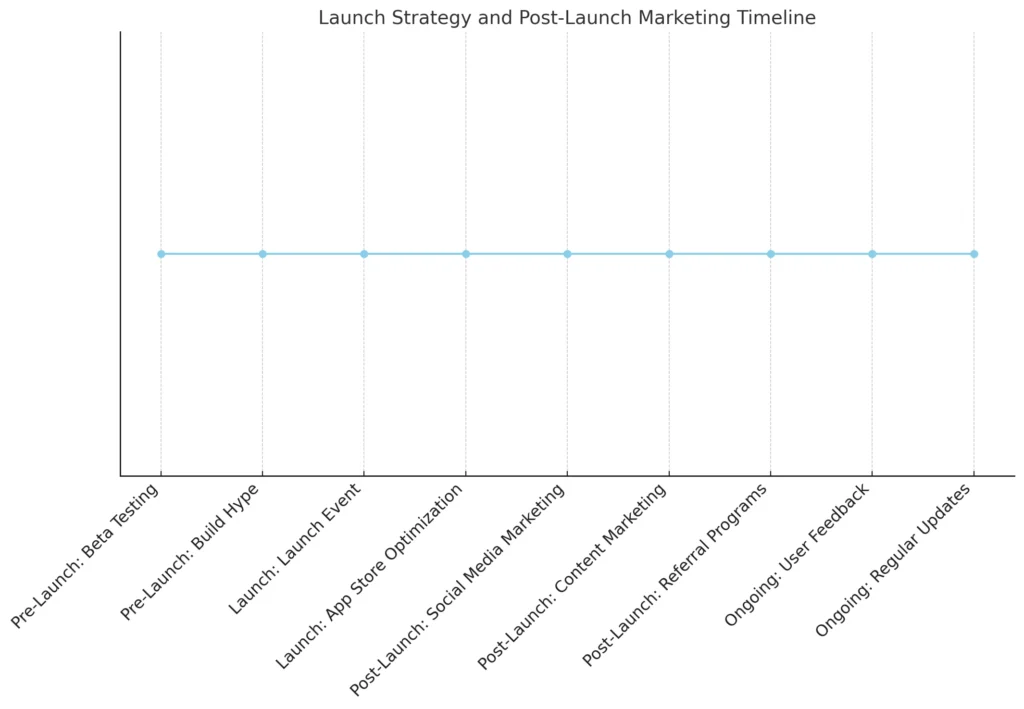
Legal and Regulatory Considerations
Launching a multi-service driver app involves navigating a complex landscape of legal and regulatory requirements. Ensuring compliance is essential not only for the smooth operation of your app but also to build trust with users and avoid costly legal issues. Here are the key legal considerations to keep in mind when developing your app:
1. Licensing and Permits
- Transport Licensing: Depending on your location, you may need specific permits or licenses to operate a ride-hailing service. This can include taxi operating licenses or special transport permits.
- Food Delivery Regulations: If your app includes food delivery, ensure compliance with local health and safety regulations regarding food handling and delivery.
2. Data Privacy and Security
- GDPR Compliance: If operating in or serving customers in Europe, adhere to the General Data Protection Regulation (GDPR). This involves obtaining user consent for data collection, ensuring data protection, and giving users the right to access their information.
- Local Data Protection Laws: Familiarize yourself with local laws regarding data privacy, such as the California Consumer Privacy Act (CCPA) in the United States.
3. Terms of Service and User Agreements
- Clear Terms: Develop comprehensive terms of service that outline user responsibilities, liability limitations, and the rights of the platform.
- User Agreements: Ensure drivers and partners also have clear agreements detailing their roles, responsibilities, and compensation structures.
4. Insurance Requirements
- Liability Insurance: Verify that you have adequate insurance coverage for both your users and drivers. This may include coverage for accidents during rides or deliveries.
- Business Insurance: Consider general business insurance to protect against unforeseen circumstances.
5. Intellectual Property Protection
- Trademark and Copyright: Protect your brand by registering trademarks for your app’s name and logo. Ensure that your content is original to avoid copyright infringement.
Legal Consultation
Given the complexities involved, it’s advisable to consult with a legal expert familiar with tech startups and the transportation industry to ensure that your app complies with all necessary regulations.
Ensure compliance with local regulations regarding data privacy laws like GDPR.
| Consideration | Description | Implication |
|---|---|---|
| Licensing and Permits | Transport and food delivery licenses | Required for legal operation |
| Data Privacy and Security | Compliance with GDPR and local laws | Avoids legal penalties and builds trust |
| Terms of Service | Clear user agreements | Defines user rights and responsibilities |
| Insurance Requirements | Liability and business insurance | Protects against risks and liabilities |
| Intellectual Property Protection | Trademark registration and copyright compliance | Safeguards brand identity and content |
Future Growth and Scalability
As you launch your multi-service driver app, planning for future growth and scalability is crucial. The digital landscape is ever-evolving, and ensuring that your app can adapt and grow with changing market demands is key to long-term success. Here are essential strategies to consider for scaling your app effectively:
1. Modular Architecture
- Microservices Approach: Design your app using a microservices architecture. This allows different components (like ride-hailing, food delivery, etc.) to be developed, deployed, and scaled independently.
- Easy Updates: Modular architecture enables you to update or add new services without affecting the entire app, ensuring smoother transitions and less downtime.
2. Geographic Expansion
- Market Research: Identify new markets that have a demand for multi-service platforms. Conduct thorough research to understand local needs and preferences.
- Localized Features: Adapt your services to meet regional requirements. This could involve integrating local payment methods or partnering with local businesses.
3. User Feedback and Continuous Improvement
- Regular Surveys: Implement feedback mechanisms to gather user opinions and suggestions for improvement.
- Iterative Development: Use agile methodologies to adapt quickly based on user feedback and emerging trends. Regularly update your app with new features and enhancements.
4. Integrating Advanced Technologies
- AI and Machine Learning: Utilize AI to optimize routes, improve user recommendations, and analyze data patterns for better decision-making.
- Blockchain for Security: Consider blockchain technology to enhance security and transparency in transactions, particularly for payments.
5. Diversifying Services
- Expand Offerings: Consider adding complementary services that align with user needs. For example, integrating vehicle rentals or home services can create more value for users and increase revenue streams.
- Partnering with Other Services: Collaborate with other businesses to offer bundled services that enhance user convenience and broaden your app’s appeal.
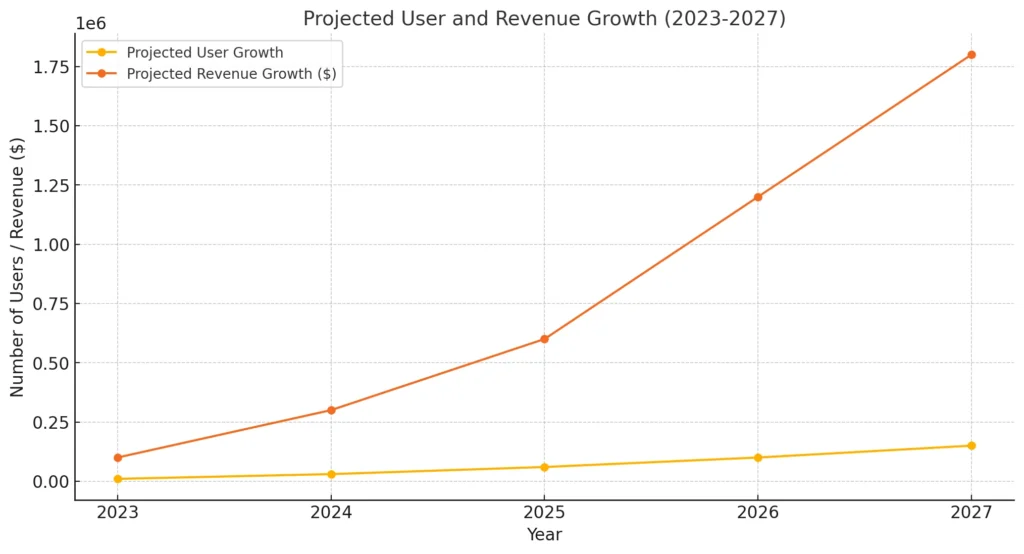
Why Trust Miracuves Solutions for Your Next Project?
When it comes to building a multi-service driver app, choosing the right development partner can make all the difference. Miracuves Solutions stands out as a trusted ally in the competitive landscape of app development, offering several compelling reasons to consider them for your next project.
1. Cost Efficiency
- Significantly Reduced Costs: With Miracuves Solutions, you can develop a high-quality app for just 10% of the global average cost. For example, while the typical development cost can reach $6,000, Miracuves makes it possible for you to launch your app for only $600. This dramatic cost saving allows startups and entrepreneurs to invest more in marketing and scaling their business.
2. Rapid Development
- Launch in Just One Day: The traditional development timeline can take months, but with Miracuves, you can go from concept to launch in just one day. This quick turnaround gives you a competitive edge, allowing you to capture market opportunities faster than your competitors.
3. Pre-Built, Customizable Designs
- ready-made solutions: Miracuves offers a range of pre-built app designs that are both functional and visually appealing. These ready-made solutions can be easily customized to fit your brand identity, ensuring you maintain a unique presence in the market without starting from scratch.
4. Proven Track Record
- Successful Implementations: Miracuves Solutions has a history of successfully helping businesses launch innovative apps. Their experience in the market means they understand the nuances of app development and can provide valuable insights throughout the process.
5. Comprehensive Support
- End-to-End Services: From initial concept development to post-launch support, Miracuves Solutions provides comprehensive services that guide you through each stage of the app development process. This ensures that you have the support you need at every step.
6. Commitment to Quality and Security
- Robust Security Measures: In an age where data security is paramount, Miracuves Solutions prioritizes building apps that comply with industry standards for security and data protection. You can trust that your users’ data is safe with their solutions.
| Feature | Miracuves Solutions | Traditional Development |
|---|---|---|
| Cost | $600 | $6,000 |
| Development Time | 1 Day | 4-6 Months |
| Customization | High (ready-made solutions) | Moderate (from scratch) |
| Support | Comprehensive | Limited |
| Security Standards | High | Variable |
| Proven Success | Yes | Varies |
Conclusion
Building a multi-service driver app like Grab is a promising venture that taps into the ever-growing demand for on-demand services in urban environments. By consolidating transportation, food delivery, and other essential services into a single platform, you can create a unique value proposition that meets the needs of modern consumers. This guide has covered the essential steps—from understanding what features to include to ensuring legal compliance and planning for future growth.
Partnering with Miracuves Solutions can significantly enhance your journey, allowing you to leverage their cost-effective and rapid development services. With the ability to launch a high-quality app for just $600 and in a matter of one day, you can enter the market quickly and effectively. Their pre-built designs and comprehensive support ensure that you’re not just building an app but creating a robust platform that can scale as your user base grows.
As you move forward, keep user feedback at the forefront of your development process, continuously iterating on your app to enhance user experience and retention. With the right strategies in place, your multi-service driver app can not only succeed but thrive in a competitive landscape.
From ride-hailing to food delivery and digital
payments!
Our super app solution covers all bases. Ride, eat,
pay—all in one place with our complete super app solution.
FAQs
How much does it cost to develop a Grab clone?
Developing a Grab clone can vary significantly based on the complexity of the app. Traditional development costs can range from $5,000 to $60,000, while partnering with Miracuves Solutions allows you to build a similar app for just $600.
How long does it take to build a multi-service ride app?
Typically, developing a comprehensive app can take 4 to 6 months. However, with Miracuves Solutions, you can launch your app in just one day, significantly speeding up the process.
What is the benefit of using pre-built solutions?
Pre-built solutions from Miracuves Solutions save time and costs while providing customizable designs that ensure a high-quality user experience. This allows you to focus on marketing and scaling rather than starting from scratch.
How can I ensure legal compliance for my app?
Ensure compliance by understanding local regulations regarding transport and delivery services, data privacy laws like GDPR, and securing necessary licenses. Consulting with legal experts in tech startups is highly recommended.
What features are essential for an MVP?
An MVP for a multi-service driver app should include user registration, ride-hailing functionality, in-app payment integration, order tracking, and basic driver features. This allows you to launch quickly and gather user feedback for improvements.
Check out our popular super app solutions offered by Miracuves – built for versatility, performance, and scale:
- Gojek Style Platform– A powerful all-in-one super app offering ride-hailing, food delivery, courier, payments, and more.
- Glovo Style Platform – An on-demand delivery app covering food, groceries, pharmacy, and courier services in one platform.
- Grab Style Platform – A comprehensive app solution combining transportation, delivery, digital payments, and everyday services.



